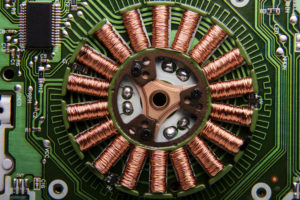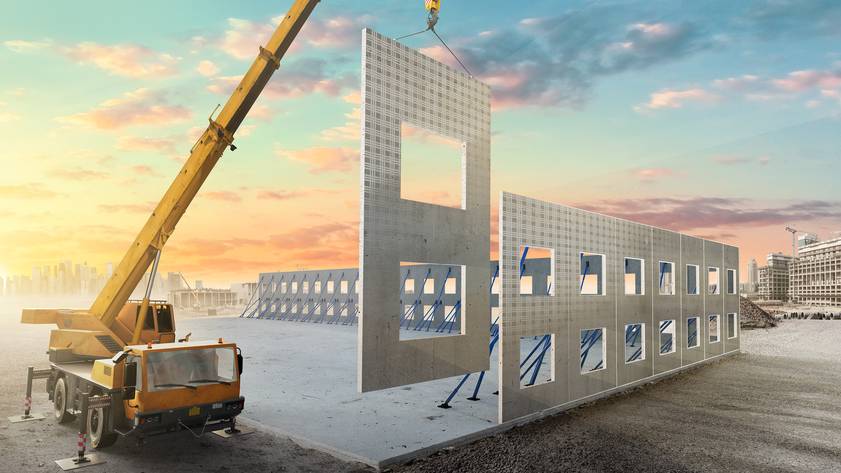Electric Technology: The Backbone of Contemporary Society
Electric technology has become the cornerstone of contemporary society as it provides the most adaptable, cost-efficient, and mechanism for energy generation, transmission, and consumption among the various energy systems. Even after 200 years of its invention, electrical technology is still evolving. There is a constant demand for new and innovative electrical machinery across all market segments; therefore, technology is continuously advancing to meet emerging needs.
Modern machines are undergoing pressure to perform better, reduce emissions, have better functionality, and be safer and more reliable. This has created a demand for more accurate calculation-optimization techniques and opened the door for newer varieties of electrical equipment.

The Disruption in Electrical Technology
Disruption in electrical technology has paved the way for several machines that use switching and synchronous reluctance technique and permanent magnets to provide many exciting features for energy conversion. Likewise, additive manufacturing, commonly known as 3D printing, is creating newer opportunities for breakthroughs in low-volume production by offering quicker and less expensive prototyping, shorter supply chains, and shortened lead times.
Many factors led to the creation of electrical machinery. Both client requests and legal duties fall into this category. Additionally, the development of business and machine control systems creates new possibilities for the creation of brand-new electrical machines. It shows that the electrical industry is expanding and will do so in the future due to the excessive market demands.
Exploring the Top 5 Developments in Electrical Technology
In this regard, the article sheds light on the top five developments of electrical technology while acquainting you with the impending advances and disruption in this field. So, keep reading.
1. Permanent Magnet Electrical Machines
Permanent magnet electrical devices are becoming more and more popular as viable electro-mechanical converter technology. The torque density of these converters is very high, and they are incredibly efficient. The wide range of industrial applications for these machines, including their use in electric/hybrid cars, electric aircraft, and ships, the production of renewable energy, autonomous propulsion systems, and other areas, has gained popularity.

2. Synchronous Reluctance Machines and Drives
Synchronous-reluctance drive systems offer extraordinarily high levels of efficiency as compared to conventional asynchronous technology, maintaining great power density and dynamic response in both full and partial load ranges. This reduces expenses and saves energy. These factors contribute to the increasing acceptance of these technologies in the machine designing domains.
3. Brushless DC Machines
The term “Brushless DC Electric Motor” (BLDC) refers to an electric motor powered by a direct current voltage supply and commutated electronically as opposed to using brushes, like traditional DC motors. As a result of their great controllability capabilities and higher efficiency, BLDC motors are currently more widely used than traditional DC motors.

4. Energy-Efficient Motors
The enhanced performance capabilities of energy-efficient motors, which can be 2-8 % more efficient than conventional motors, are a result of new technologies and manufacturing breakthroughs. These technological advancements include the use of better electrical steel and more copper in the winding to reduce the energy loss of a motor, requiring a smaller fan to remove heat. Similarly, the use of Neodymium magnets creates electric car motors with the improved power density and more horsepower in a smaller frame. Although the cost of these technological advancements is initially high, they have superior lifetime durability and a longer bearing and insulating lifespan, which is an advantage for long-term use.

5. Additive Manufacturing of Electrical Machines
Applications for modern machinery demand extraordinary performance characteristics, such as high power density, integrated functionality, and better thermal, mechanical, and electromagnetic properties. It is hard to fulfill these performance standards with conventional manufacturing methods, but additive manufacturing (AM) enables a higher level of design flexibility. With the correct applications, additive manufacturing may produce enhanced performance, complicated shapes, and streamlined construction. As a result, those who actively pursue additive manufacturing have plenty of opportunities for designing innovations.
In Conclusion
In this fast-evolving technological era, new trends in electric technology are continuously emerging. Organizations are looking for disruptive innovations to automatize manufacturing, production, and other business operations. These trends are likely to continue as customers’ demands evolve. Therefore, it is wise to invest in learning these technologies to stay ahead of the competition and gain maximum career growth opportunities in the electrical design industry.
FAQs
How do these developments in electric technology impact various industries and businesses?
These advancements revolutionize industries by enhancing efficiency, reducing costs, and promoting sustainability. They lead to the widespread adoption of electric vehicles, improved manufacturing processes, and innovation in renewable energy systems. In turn, businesses benefit from lower operating expenses, increased competitiveness, and opportunities for growth in emerging markets.
How are brushless DC motors utilized in electric vehicles, and what advantages do they offer over other types of motors?
Brushless DC motors are used in Electric Vehicles due to their efficiency, reliability, and compact design. They offer advantages such as higher efficiency, reliability, regenerative braking, smooth operation, and enhanced control compared to other types of motors.
What are the key features of CADD Centre’s brushless DC motor controller training module?
CADD Centre’s brushless DC motor controller training module offers hands-on practical training, expert guidance, and industry-standard curriculum tailored to meet current industry demands. Upon completion, students gain proficiency in brushless DC motor principles and control techniques, receiving certification as validation of their skills
What are the main applications of DC electric motors across different sectors?
The main applications of DC electric motors across different sectors include powering electric vehicles, industrial machinery, aerospace systems, renewable energy devices, robotics, home appliances, medical equipment, marine vessels, entertainment systems, and agricultural machinery
What kind of support and resources does CADD Centre offer to students and professionals pursuing courses in electrical and electronic engineering, BLDC electric motors, electrical machines?
At CADD Centre, students and professionals pursuing courses in electrical and electronic engineering, BLDC electric motors, electrical machines, and electric technology design receive dedicated instructor guidance, access to cutting-edge facilities, and comprehensive learning materials. We offer career counseling, job placement assistance, and ongoing opportunities for skill enhancement through workshops and industry partnerships, ensuring our learners are well-equipped for success in their field.




